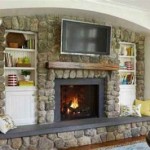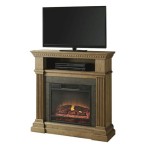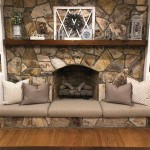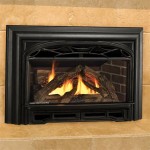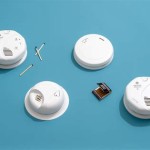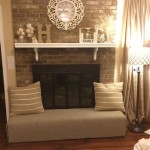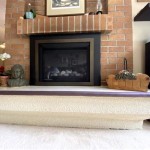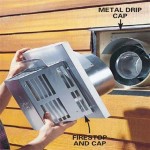Understanding Fireplace Insert Vents: Functionality and Importance
Fireplace inserts are increasingly popular additions to homes, offering a more efficient and cleaner-burning alternative to traditional open fireplaces. A crucial, yet often overlooked, aspect of a fireplace insert is its ventilation system. Proper ventilation is not merely an accessory; it is fundamental to the safe and effective operation of the insert, contributing significantly to its overall performance and longevity. This article will delve into the purpose, types, and significance of fireplace insert vents, providing a comprehensive understanding of their role in optimizing home heating and safety.
The primary function of fireplace insert vents is to manage the airflow around the insert itself. This airflow is essential for several reasons. First, it helps to distribute heat produced by the burning fuel more evenly throughout the room. Without proper ventilation, the heat tends to concentrate around the insert, creating uneven heating patterns and potentially overheating the unit. Second, ventilation plays a crucial role in preventing the buildup of excessive heat within the firebox and surrounding components. Overheating can lead to premature wear and tear, component failure, and even hazardous situations. Third, the ventilation system facilitates the combustion process by providing a controlled supply of oxygen, ensuring efficient burning and minimizing the production of harmful emissions.
The specific design and configuration of the ventilation system often vary depending on the type of fireplace insert, its size, and the manufacturer's specifications. However, the underlying principles remain consistent: to regulate temperature, promote efficient combustion, and safely exhaust combustion byproducts. Ensuring that the chosen insert and its ventilation system are appropriately matched to the existing fireplace and the home's overall ventilation system is paramount for optimal performance and safety.
The Role of Vents in Heat Distribution
One of the main advantages of a fireplace insert is its ability to provide targeted and efficient heat. This efficiency is largely dependent on a well-designed ventilation system. The vents, typically located on the front or top of the insert, allow heated air to be circulated into the room. This circulation is often enhanced by a blower fan, which forces air across the heated surfaces of the insert and then expels it into the living space. Without this forced-air system, the heat primarily radiates directly from the insert, resulting in significant temperature variations within the room.
The effectiveness of the heat distribution is significantly influenced by the vent design. Some inserts utilize multiple small vents to create a broad, diffused airflow, while others employ larger vents to generate a more concentrated stream of heat. The choice depends on the room's dimensions, the desired heating pattern, and the user's preferences. Strategically directing the airflow can help to eliminate cold spots and maintain a consistent temperature throughout the space. Furthermore, adjustable vents allow users to customize the heat output and direction, providing greater control over the room's climate.
The materials used in the construction of the vents also play a role in their performance. Durable, heat-resistant materials such as cast iron or steel are commonly used to withstand the high temperatures generated by the insert. The vent design should also minimize heat loss and prevent the escape of combustion gases into the room. Regular cleaning and maintenance of the vents are essential to ensure they remain unobstructed and function optimally. Dust and debris can accumulate over time, reducing airflow and decreasing the efficiency of the heating system.
Preventing Overheating and Ensuring Safe Operation
Fireplace inserts generate considerable heat, and without proper ventilation, this heat can accumulate within the unit and surrounding structure, posing a significant safety risk. Overheating can damage the insert's components, reduce its lifespan, and potentially lead to a fire. The ventilation system helps to dissipate excess heat and maintain a safe operating temperature.
The design of the insert's ventilation system often incorporates several safety features to prevent overheating. These may include temperature sensors that automatically shut down the insert if the temperature exceeds a safe limit, as well as baffles and insulation that protect surrounding combustible materials from excessive heat exposure. The air circulating through the vents not only dissipates heat but also helps to cool critical components such as the firebox, blower motor, and electrical connections.
Furthermore, proper ventilation is crucial for preventing the buildup of carbon monoxide. Carbon monoxide is a colorless, odorless gas produced during incomplete combustion. If the ventilation system is inadequate or blocked, carbon monoxide can accumulate in the home, posing a serious health hazard. A properly functioning vent system ensures that combustion gases are safely exhausted through the chimney and away from the living space. Regular inspection and maintenance of the ventilation system, including the chimney, are essential for preventing carbon monoxide poisoning.
Optimizing Combustion and Minimizing Emissions
Efficient combustion is not only important for maximizing heat output but also for minimizing harmful emissions. The ventilation system plays a crucial role in regulating the airflow required for complete combustion. By providing a controlled supply of oxygen to the firebox, the ventilation system promotes a cleaner and more efficient burn.
The air vents of an insert typically have adjustable dampers that allow the user to control the amount of air entering the firebox. Adjusting the air intake can influence the rate of combustion, the flame intensity, and the overall efficiency of the burn. Insufficient airflow can lead to incomplete combustion, resulting in the production of smoke, soot, and carbon monoxide. Excessive airflow, on the other hand, can cause the fire to burn too quickly, reducing heat output and wasting fuel.
Modern fireplace inserts are often designed with advanced combustion technologies that further enhance efficiency and reduce emissions. These technologies may include secondary air injection systems, which introduce additional air into the firebox to burn off unburnt gases and particles. The ventilation system is integral to the operation of these technologies, ensuring that the air is delivered precisely where it is needed for optimal combustion. Regular cleaning and maintenance of the ventilation system are essential for ensuring that these advanced technologies function as intended and comply with environmental regulations. Ensuring proper venting also helps to prevent creosote buildup in the chimney, reducing the risk of chimney fires. The ventilation system, therefore, contributes not only to the safety of the home but also to the overall environmental impact of the fireplace insert.
In addition to the physical vent openings, the pressure dynamics within the chimney system also influence the effectiveness of the insert's ventilation. Proper flue sizing and chimney height are crucial for creating adequate draft, which is the force that draws combustion gases up and out of the chimney. An improperly sized or obstructed chimney can impede airflow, leading to poor combustion, excessive smoke, and potential safety hazards. Regular chimney inspections and cleaning are necessary to ensure that the draft is sufficient and that the ventilation system is functioning optimally.

Fireplace Inserts Require Certain Types Of Venting Read On To Learn More

Chimney Liners Usa Fireplace Insert Venting Information

35 Ruby Contemporary Intellifire Touch Direct Vent Fireplace Insert Blower And Remote Electronic Ignition Majestic

High Quality Direct Vent Liner System For Gas Inserts 46dva Cl33 4dt 33ik35vb Friendly Fires

What Are The Best Ways To Vent A Gas Fireplace Zoroast

Top Direct Vent Gas Inserts In D C

Rushmore 30 Direct Vent Fireplace Insert Fine S Gas

Fireplaceinsert Com Kingsman Fireplace Insert Idv36

Empire Direct Vent Gas Fireplace Insert Loft

Majestic Ruby 30 Inch Direct Vent Gas Fireplace Insert Ruby30 Bbqdirect Com
Related Posts

